
All categories
Featured selections
Trade Assurance
Buyer Central
Help Center
Get the app
Become a supplier

(511 products available)




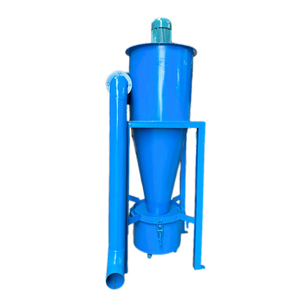




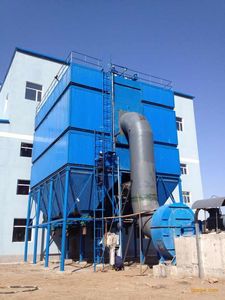







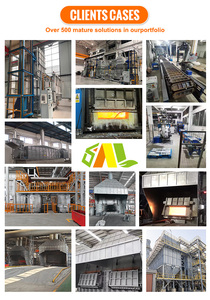

















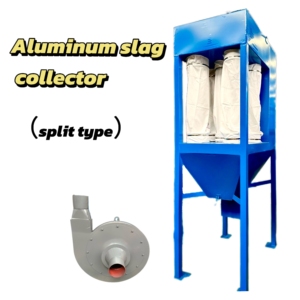
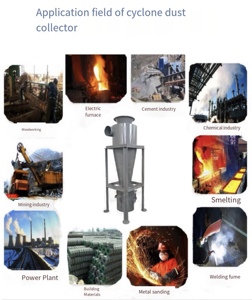
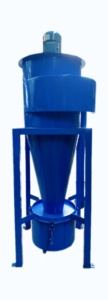

Slag collectors come in several types, each suited to specific operational needs. These variations are dictated largely by the environmental conditions under which they're employed and the nature of the processes generating the slag.
This is a rundown of common types of slag disposal collectors used across industries:
Mechanical Slag Collectors
Apart from that, mechanical devices work by scraping or scooping the molten or solid slag from specified areas. This type is frequently used in industries where slag solidifies on surfaces, such as in metallurgical furnaces. Examples of mechanical slag collectors are chain conveyors, screw conveyors, and vibrating equipment. Chain conveyors collect the slag by means of a chain that moves through the collection area. Screw conveyors have a helical screw that moves the collected material upward. Vibrating equipment uses vibration to move the slag to storage or disposal areas.
Vacuum Slag Collectors
Vacuum collectors are noteworthy for their ability to collect fine particulate and liquid slag. Using suction, they are effective in environments where material can be airborne or where small amounts of slag fall to the ground. With the high efficiency of vacuum collection, these are commonly found in industries like copper operations and other nonferrous metallurgy. Its compactness makes it a choice for spaces where other collection systems cannot fit in.
Hydraulic Slag Collectors
These release fluids that help in the collection process. A hydraulic collector utilizes water or another fluid to separate and collect slag from molten metal processing. They are partly used in metalworking industries like copper processing, and where slag has to be separated from the molten metal. The molten mixture of slag and metal floats on the fluid surface, enabling easy skimming or collection. This collector is efficient in cooling the environment and reducing fire hazards.
Electromagnetic Slag Collectors
Electromagnetic slag collectors employ electromagnetic forces in slag to manipulate its situation. Commonly used in the steel industry to collect non-metallic slag off the surface of molten steel or other molten materials. This collector lifts and transfers the use of magnetic fields. The main advantage of electromagnetic collectors is operation without mechanical movement. This means that maintenance costs can be reduced while at the same time improving efficiency.
Dumping Slag Pots
Dumping slag pots are vessels used for collecting liquid slag during the slag pot process. Common in industries like steel manufacturing. It is designed to withstand high temperatures, which means that after cooling down, the pots can be tipped over to remove the contents. The primary function of slag pots is to contain and transport liquid waste safely until it cools and solidifies.
Slag collectors perform the critical function of managing slag produced during metallurgical processes. Slag, a mixture of impurities, waste materials, and sometimes valuable minerals, must be efficiently removed to maintain production safety, protect equipment, and ensure environmental compliance.
Some key purposes of slag conveyors include:
Features of slag collectors are the components and design elements that enhance their performance. Key features include:
The design of a slip ag collector directly impacts its efficiency, durability, and ease of maintenance. Key design considerations include:
Slag collectors are useful in many industrial situations. Each adaption of the collectors is dependent on the nature of the process that generates the slag and the working environment.
This is a rundown of typical scenarios where slat collectors play an important role:
Steel Manufacturing
There is the generation of a significant amount of slag in the steel industry, for example, during the process of refining ores. This type of solidifies quickly and can be dangerous if not adequately managed. Slag collectors in this industry mostly be of the mechanical and electromagnetic types that ensure the safety of operations and the protection of equipment from clogging. Vacuum collectors find their applications in this field by collecting dust and smaller particles.
Copper Smelting
In copper smelting, the slag is liquid and lighter than the molten metal and therefore has to be collected using hydraulic collectors or vacuum systems. In some works, collectors work to prevent this type of slag from contaminating copper products. Therefore, water-cooled eductors and collectors are in copper works to cool and remove the copper-infused molten mix of slag and metal.
Non-ferrous Metallurgy
Slag recycling is a common practice in non-ferrous metallurgy, which is the field of industries such as lead, zinc, and aluminum. The type of collector used depends on the operation, but electromagnetic and mechanical collectors are mostly used to examples to collect nonmetallic impurities in these processes. These industries use vacuum collectors that can capture fine particles that may escape other systems.
Thermal Power Plants
As a waste product, thermal power plants produce slag from the burning of coal in fluidized bed boilers. Coal ash or slag hammering easily cools and solidifies in such a way that it becomes difficult to handle if let longre is allowed to wait. This kind of power generation uses mechanical collectors like vibrating conveyors or screw augers to keep the ashes moving through the system. Good collection prevents equipment from being blocked and improves the hygiene of the workplace.
Foundries
In foundries, there is a generation of slag in the form of dross, which is a type of waste that forms at the metal surface during pouring. These are common among people working with molten metals, including casting. In these operations, collectors like slate tables and vacuum devices remove the dross from the top alloy while minimizing contamination and ensuring good-quality casting.
Choosing the right slag collector for an industrial operation requires considering several key factors to ensure efficiency and safety.
Type of Industry
The industry type dictates which kind of collector will work best. Steel and nonferrous smelting require advanced systems like electromagnetic and hydraulic collectors. Coal-powered and thermal plants can work with simpler mechanical devices like vibrating conveyors.
Slag Characteristics
Functional requirements for collectors depend on characteristics such as whether slag is solid, liquid, coarse, or fine. For instance, hydraulic collectors work best for liquid slag like the one found in copper works. In contrast, vacuum collectors are perfect for fine particles. Understanding these characteristics will inform the choice of collectors.
Environmental Conditions
The working environment has as much effect on the choice of the collector as does the industry itself. Factors like ambient temperature, humidity, and exposure to corrosive chemicals determine the material of action and design to be used. For example, vacuum collectors find their way into spaces where dust accumulation is likely to happen, yet space is a problem.
Efficiency and Capacity
Efficiency in the slag collection process directly impacts operational safety and reliability. The collector used should have the capacity to handle maximum slag generation without being overwhelmed. Inadequate capacity causes bottlenecks and increases safety hazards, whereas overcapacity will likely incur excessive operational costs.
Maintenance Requirements
There is a need for consideration of the maintenance frequency and complexity associated with the collector. Collectors that require high maintenance will lead to operational downtimes, thus reducing efficiency.
A1:Slag collectors are made of steel alloys that withstand the extremely high temperatures and corrosive environments.
A2: These collectors separate and collect slag with water or another fluid in which the mixture of molten metal and slag floats.
A3: Vacuum collectors are used in copper operations and other nonferrous metallurgy, where the concentrate of fine particulate and liquid slag is predominately found.
A4: Yes, there are; for example, closed collector systems eliminate contact with hazardous materials and help cool parts to reduce fire risks.
A5: Picking the right collector for industry promotes maximum efficiency in collection while reducing safety dangers related to handling and accumulation of slag.